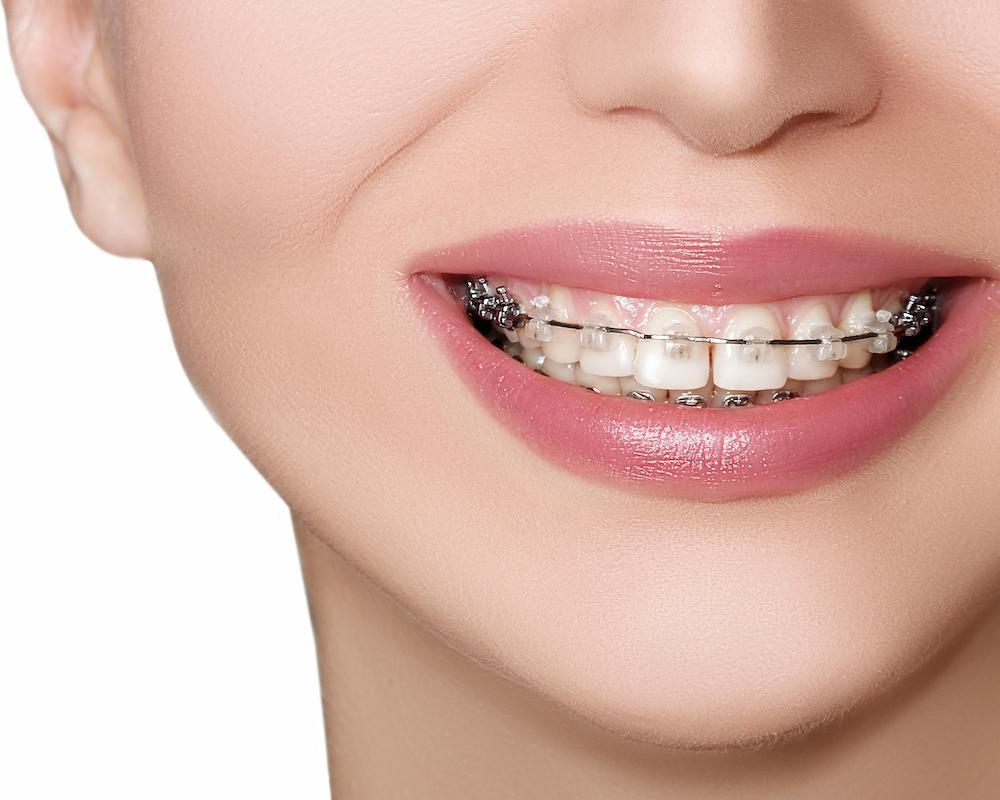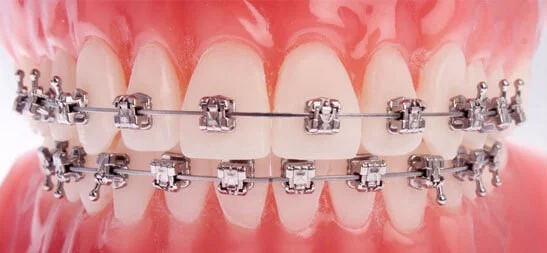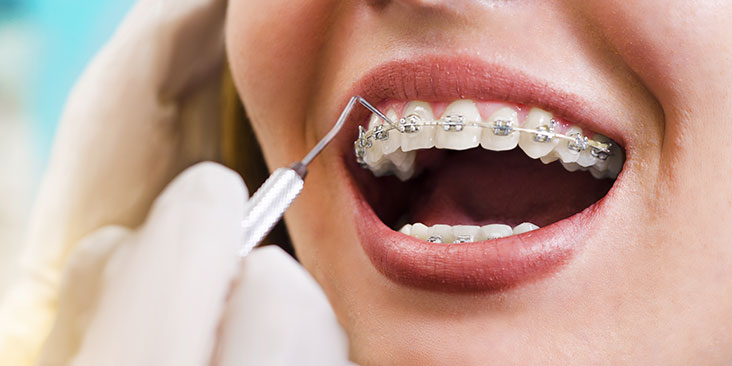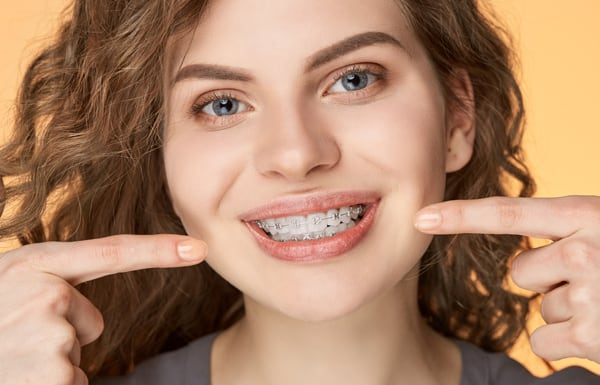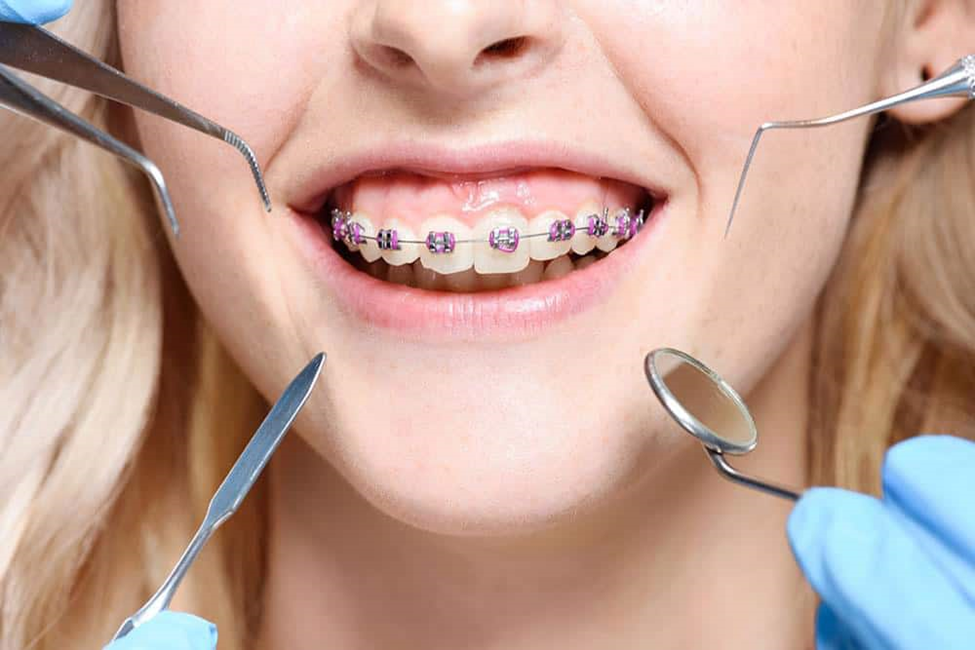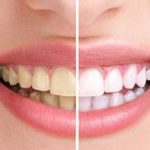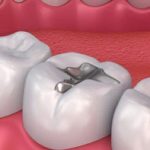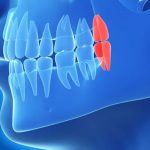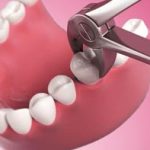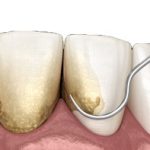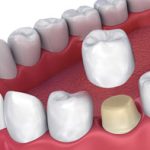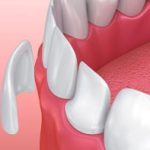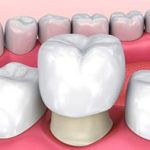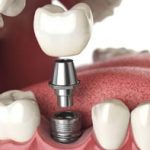ORTHODONTICS
What is orthodontics?
Orthodontics is the branch of dentistry that focuses on diagnosing and treating “bad bites” (malocclusion). Common orthodontic treatments include braces, clear aligners and retainers.
The way your teeth fit together has a significant impact on your oral health. By improving the way your upper and lower teeth meet, you can reduce your risk for a host of oral health issues, including cavities, gum disease and excessive wear (erosion).
Who offers orthodontic treatment?
In most cases, orthodontists perform this type of treatment. An orthodontist is a doctor who receives two to three years of additional training after graduating from dental school. They focus on improving your bite. They don’t perform general dentistry treatments like fillings, crowns or bridges.
When should I take my child to the orthodontist?
According to the American Association of Orthodontists, children should have their first orthodontic visit no later than the age of 7. While many children won’t need treatment at this age, it’s a good time to find out if there are any issues to watch out for. Often, children who need early orthodontic treatment can reduce their need for extensive dental procedures in the future.
Who benefits from orthodontics?
Almost everyone can gain some benefit from orthodontics. But some people need treatment more than others. Many people seek orthodontic treatment because they want to improve the appearance of their smile. But in addition to cosmetic benefits, orthodontics offers improved chewing function and better oral health.
Common orthodontic problems
Types of orthodontic problems include:
- Overbite, when your upper teeth stick out over your lower teeth.
- Underbite, when your lower teeth stick out further than your upper teeth.
- Overlapping teeth.
- Crowded teeth.
- Crooked teeth.
- Rotated teeth.
- Impacted teeth (which are partially or fully trapped in your jawbone).
Who shouldn’t have orthodontic treatment?
To qualify for orthodontic treatment, you shouldn’t have any serious dental issues like extensive decay or gum disease. Placing braces on diseased teeth can have a serious negative impact on your oral health.
If you have cavities or gum disease, see a dentist for treatment. Once you manage those conditions, ask your dentist if orthodontic treatment is right for you
What are examples of orthodontic treatment?
There are several treatments that fall under the specialty of orthodontics. Some of the most common include:
Braces
Braces gradually shift your teeth into their desired positions over time using a combination of brackets, bands and wires. There are different types of braces depending on your needs, including traditional metal braces and clear (ceramic) braces.
Clear aligners
Clear orthodontic aligners are a popular alternative to braces. Well-known brands include Invisalign® and ClearCorrect®. Rather than using brackets and wires to straighten your teeth, these systems use a series of custom-made, clear aligner trays. You wear each set of trays for one to two weeks before switching them out for the next set in the series. Over time, the clear aligners shift your teeth into their proper positions.
Retainers
If you wear braces or clear aligners, you’ll need a retainer once your orthodontic treatment ends. A retainer is a custom oral appliance that keeps your teeth from drifting out of their proper positions. Your orthodontist can tell you how often you’ll need to wear your retainer to maintain the results of treatment.
Palate expanders
Orthodontists recommend some treatments during childhood. This is because a child’s facial bones are still developing and they’re much easier to move and manipulate. A palate (palatal) expander helps to widen a child’s upper jaw. Most children don’t need palate expanders. But under the right circumstances, these devices can create extra space without the need for tooth extractions or other procedures.
What are the advantages of orthodontics?
The cosmetic benefits of orthodontics are clear. But these treatments offer functional and health-related advantages as well:
- When your teeth are in proper alignment, they’re much easier to clean.
- Straightening your teeth can improve chewing and speech function.
- Orthodontic treatment can ease pain related to TMJ disorder.
- An aligned bite can reduce your risk for cavities, gum disease and other oral health issues.
- Orthodontics can help you achieve and maintain a beautiful, healthy smile.
What are the disadvantages of orthodontics?
The main disadvantage is short-term: You’ll have to follow treatment guidelines closely and be patient until you reach your goal. For some people, orthodontic treatment takes less than one year. For others, it can take up to two years or longer. Because every person has their own unique needs, treatment times look different for everyone. Ask your orthodontist what to expect.
If you don’t clean thoroughly around your orthodontic appliances, you also have a greater risk of cavities. Be sure to follow your orthodontist’s oral hygiene recommendations.
How is Orthodontics Performed in Iran?
The procedure of getting dental braces consists of three steps. They are the examination process, getting braces, and monthly check-ups.
To get your dental braces in Iran, you need to go through the first step in your home country. After visiting an orthodontist, they ask you to have dental x-ray, plaster model of your teeth, dental photographs, and a clinical exam.
Using these prerequisites, your orthodontist in Iran determines the duration of your treatment and the type of your devices. Then, the orthodontist puts your dental devices/braces in your mouth and tighten and fix them in place.
Regular visits are needed afterward in order for your dentist to check the progression of your treatment. When your dentist approves, your treatment is over and the devices are removed.
Aims of Orthodontic Treatment:
Providing cosmetic correction and improving appearance
Providing a healthy functional bite
Preventing diseases of the teeth
Some of the dental malocclusions that may be corrected by orthodontics include:
Crowded teeth – Crowding of teeth or poor alignment of teeth that may be too large for the mouth. This leads to a poor bite as well as an unsightly appearance. The most common teeth to crowd are the upper canine teeth.
An open bite – This occurs when the lower end of the upper front teeth do not touch the upper end of the lower front teeth. This leads to insufficient chewing.
Deep over bite – This describes when the top and bottom front teeth are not aligned and the bottom teeth tend to touch the roof of the mouth, sometimes damaging the gums and the palate. This may lead to gum damage, gum diseases, tooth loss and tooth wear.
Cross bite – This occurs when the teeth ends do not meet. It leads to poor appearance, insufficient chewing and easily erodible teeth.
Increased overjet – This describes when the upper teeth protrude and may result from thumb or finger sucking. This may also be due to uneven jaw bone growth.
Reverse overjet – The lower jaw protrudes beyond the upper jaw. Aside from poor cosmetic appearance, it can lead to worn teeth.
Spacing – Unnatural spacing between teeth may result from poorly developed, smaller or missing teeth.
Which type of braces works better?
This is what your orthodontist will advise you about. However, here we provide you with some details which get you more informed.
Fixed devices like dental braces bring more effective results. They are used in patients who need more teeth adjustments. They also need more care as there’s always something bonded to your teeth.
Removable devices are used when less correction is required. They are often used to help you keep your teeth in line after your teeth are back in place using dental braces. Depending on your condition and preference, your orthodontist will determine which type of appliances is better for you.
How Much Do Dental Braces Cost in Iran?
Like other treatments, the price of orthodontics is much more affordable in Iran than in other countries. For instance, getting dental braces in Iran costs from around $500 to $900 (depending on the type of device). However, the same service costs around $3,000 to $8,000 in the US, $3,500 and $6,000 in the UK, and $2,500 and $3,000 in India.

